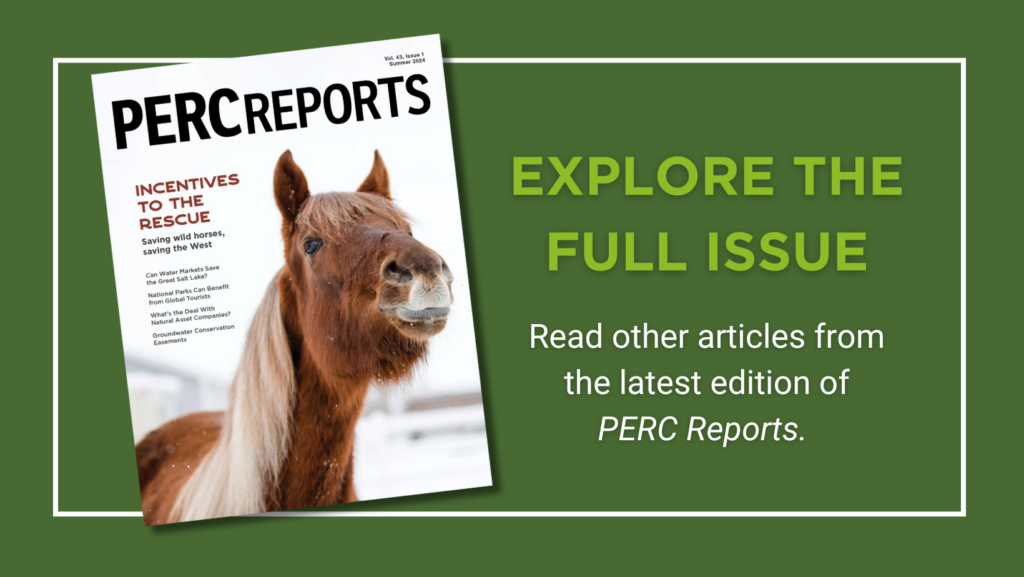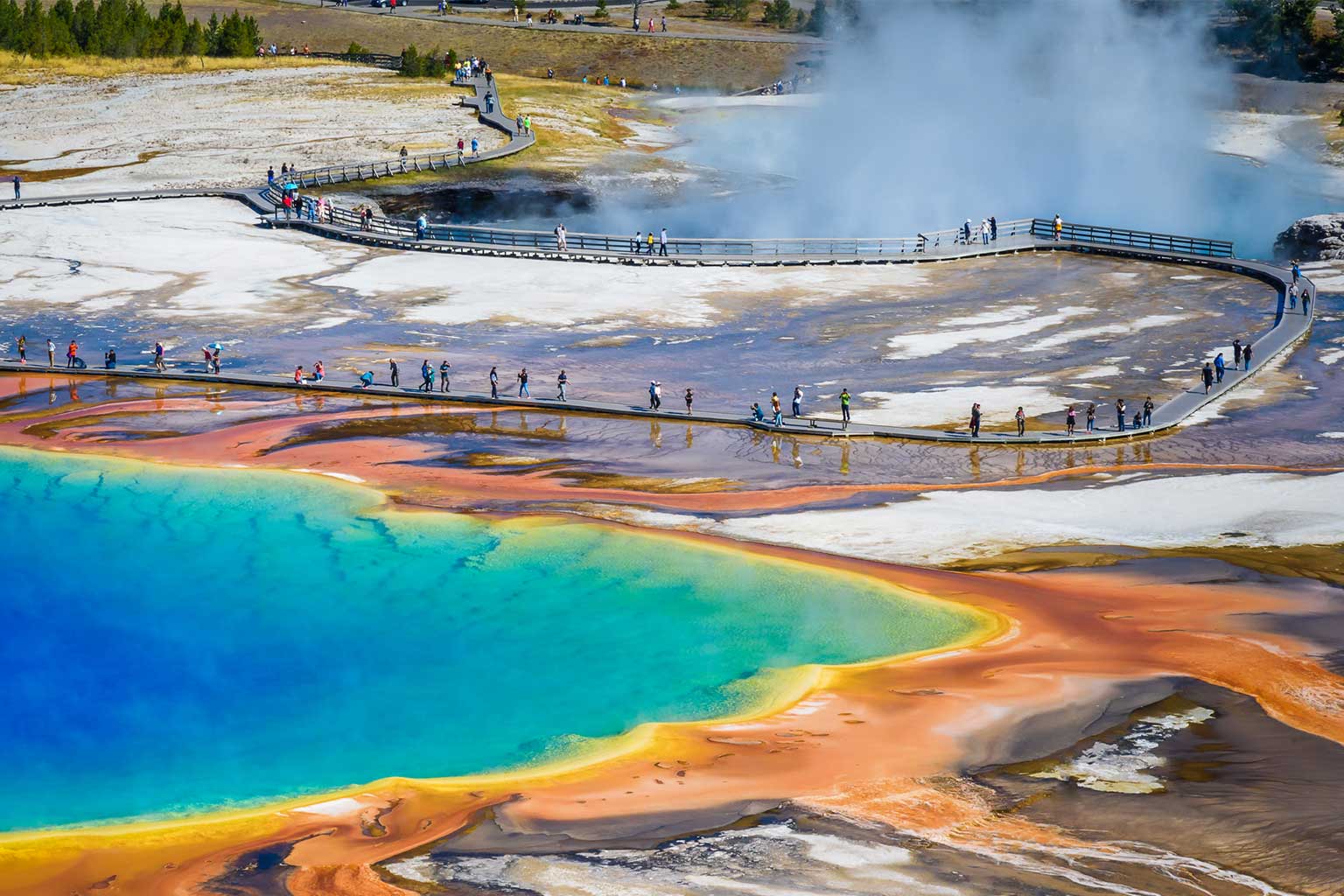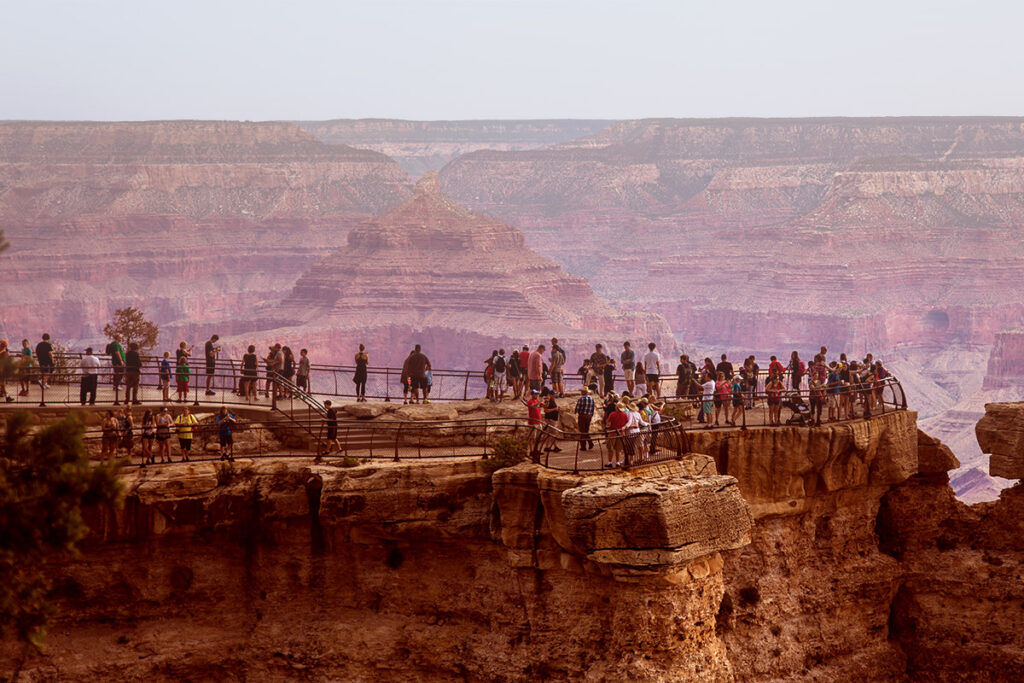
One of the most memorable hikes I’ve done was to the base of the three towers in Torres del Paine National Park. The park, near the end of the South American continent in the Chilean Patagonia, is best known for jagged mountain peaks, prominent glaciers, and vivid blue lakes. The eastern side of the park, by contrast, opens out into grasslands that are home to llama-like guanacos and other local wildlife.
A day hike to the Mirador las Torres is one of the park’s most popular attractions. When my wife and I hiked it several years ago on our honeymoon, we set out from our hotel at 5:00 am. The out-and-back (up-and-down) route takes the better part of a day, so one of the guides had suggested we get an early start. Seeing the sun rise and illuminate the craggy Andean mountains was worth waking up for, and our early start meant that we’d make it to the lookout before lunchtime.
The last mile of the hike gains about 1,000 feet of elevation. As we got closer to the top, our breathing became heavy, and large rocks littering the path served as giant steps to take us upward. We reached the end of the trail before noon, where a turquoise alpine lake framed the base of the three towers perfectly. As we admired the view, we got out sandwich lunches and sipped mate made by our guide, then put on more layers as snowflakes started to flurry. By the time we got back to the trailhead it was late afternoon. We cracked open cans of the local lager to enjoy before we piled into the van and headed back to our hotel, just outside the park gates.
About one-third of all foreign travelers to the United States visited one of our more than 400 national park sites. If each paid a modest surcharge of, say, $25 it would raise more than $300 million, nearly doubling the total fee receipts across the National Park System.
Chile is one of dozens of countries around the world that charges international tourists more than locals to visit national parks. As we entered Torres del Paine on the first of our five-day visit, our guide walked us into the guard station to purchase passes for our trip. Today, that pass costs about $14 for Chileans, while foreign tourists pay $55, practically quadruple the local price. The approach isn’t rocket science. If you’re willing and able to travel thousands of miles to visit a national park, you’re probably willing and able to pay more than a local to visit it. I would have gladly paid more—it was a bucket-list type of trip, which we saved up for, and who knows whether we’ll ever have the chance to go back. And knowing that entrance fees provide much-needed funding for national parks in Chile, I’d have happily paid more to support the stewardship and conservation of such an incredible place.
At U.S. national parks, the standard entry fee is the same for Americans and internationals alike. In light of the strains on many of the most popular parks, that seems like a missed opportunity to harness more resources to steward our national treasures. Except for a downtick during the Covid pandemic, visitation to U.S. national parks has steadily increased for a decade. More than 300 million people consistently visit our parks each year. More visitors, however, translate into more pressure on roads, trails, amenities, and other infrastructure.
Prior to the pandemic, nearly 14 million internationals visited a U.S. national park site every year. Put differently, about one-third of all foreign travelers to the United States visited one of our more than 400 national park sites. If each paid a modest surcharge of, say, $25 it would raise more than $300 million, nearly doubling the total fee receipts across the National Park System. That added revenue could be a boon that helps ensure all visitors can continue to enjoy our national parks for generations to come.
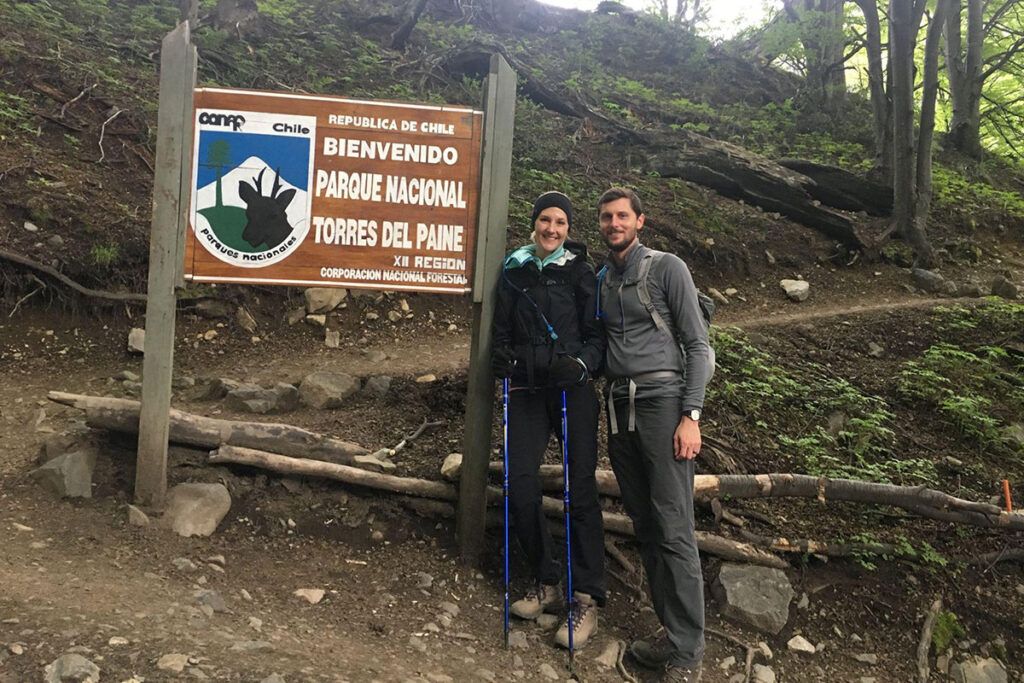
The Positive Feedback Loop of Visitor Fees
When it comes to U.S. national park funding, revenues from visitors play a crucial role. Rather than being remitted back to the treasury in Washington, D.C., all of the proceeds from park visitor fees stay within the National Park System, with the vast majority retained at the sites where they were collected. The model empowers superintendents and other on-the-ground staff who have the best knowledge about their parks’ priorities and needs. It also reduces political influence over how to spend revenues from fees. And it means that, crucially, any funds collected from visitors to U.S. sites are dedicated to maintaining ailing parks and improving their stewardship.
Relatedly, fee revenues grow in lockstep with visitation—at least for the roughly 100 park sites that charge for entry. By contrast, after accounting for inflation, funds appropriated by Congress to the National Park Service have essentially remained stagnant for decades. That’s one reason that some parks, especially bucket-list destinations that draw tourists from abroad, have struggled to keep up with surges in visitation.
Examples abound. Wastewater treatment facilities near Yellowstone’s Old Faithful are in need of repair. Maine’s Acadia National Park has 20 bridges that need to be rehabilitated. Campground bathrooms need updating at Yosemite. Miles of Shenandoah National Park’s renowned Skyline Drive need to be resurfaced. These and countless more projects like them—potholed roads, crumbling bridges, dilapidated campgrounds, failing sewer systems, condemnable employee housing—are overdue for repair, and that’s on top of the day-to-day maintenance needed to keep all national parks open and accessible to visitors.
The upshot is that there’s a great opportunity for international visitors to contribute funds to help meet the growing needs of our national parks—just as my wife and I did in Chile—especially at the many sites buckling under the stress of popularity.
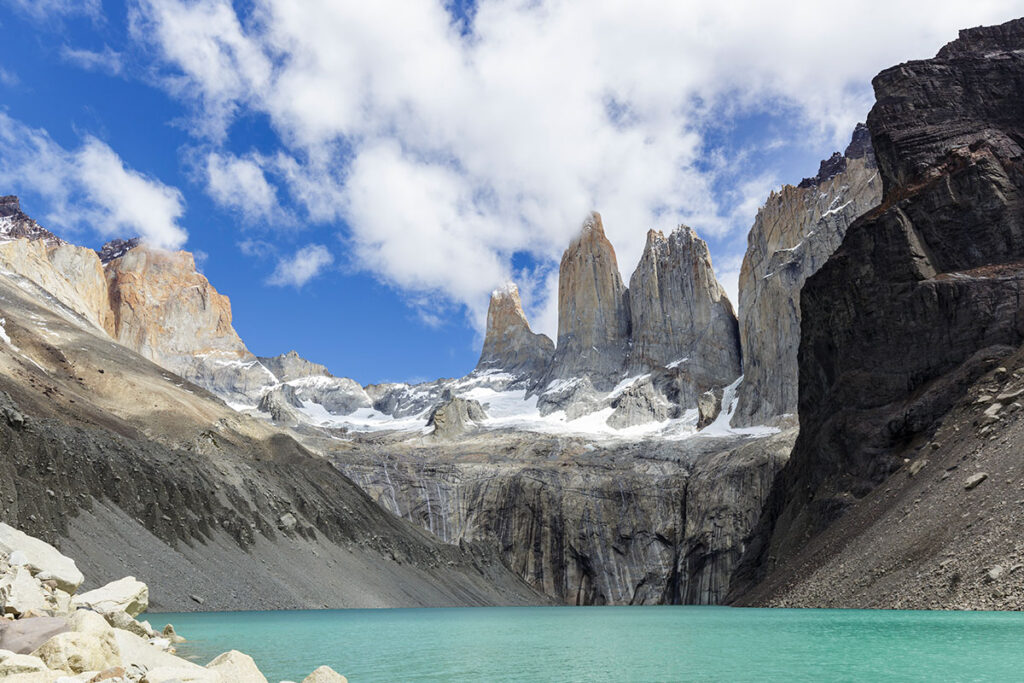
Willing and Able to Travel
If you travel to a major U.S. national park from abroad, then the entry price you pay is likely a tiny sliver of your overall trip cost. One 2017 study of Yellowstone National Park, for instance, estimated that the average overseas visitor spent a total of $4,500 on their trip. The study also estimated that raising the vehicle entry fee at Yellowstone by more than double—from $30 to $70—would decrease visitation from foreign visitors by a mere 0.07 percent. That negligible effect makes sense in context. Increasing fees by a mere $40 would barely be noticeable in the budget of most international travelers.
Other evidence supports the idea that most foreign tourists wouldn’t blink at higher entry fees. Another study, from 2014, concluded that gas prices affect national park visitation more than admission fees do. If someone is willing to travel thousands of miles to arrive at the park gates of places like the Grand Canyon or Zion, then asking them to contribute a modest additional amount for the privilege should not faze them.
The current fee system for national parks in the United States lacks nuance, with most visitors paying a flat weekly fee that grants access for all passengers in a private vehicle. As part of this relatively blunt system, standard overseas visitors pay the same price as U.S. citizens and residents. Or put another way, residents enjoy no discount when visiting their home-nation parks. Often, Americans pay even more in total than foreign visitors because, in addition to paying entry fees, most U.S. residents pay income taxes. Roughly $20 per U.S. taxpayer goes toward the National Park Service budget—each and every year, regardless of whether those Americans visit a national park. Asking overseas tourists who are not a part of the tax base to pay a little bit more seems not only fair but also prudent.
At Yellowstone, a modest surcharge on overseas visitation would likely double revenues from gate fees, while a higher one could triple current receipts.
Across all federal land management agencies, recreation fee revenues increased by 40 percent over the five years leading up to the pandemic. Recreation fee receipts for national parks now total nearly $350 million annually, an amount roughly equivalent to 10 percent of the park system’s discretionary budget. The distribution of this fee revenue varies greatly. More than 300 park sites charge no fees and therefore have no fee revenue. By contrast, several high-profile national parks, including Joshua Tree, Bryce Canyon, and Haleakala, have in some years generated more revenue through fees than they received in congressional appropriations.
As many U.S. parks face record visitation and struggle to meet maintenance needs, the idea of charging international visitors more than domestic ones has gained traction. The National Park System Advisory Board has pointed to differential pricing based on residency as one way to increase park revenue. Additionally, the late Sen. Mike Enzi (R-Wyo.) pushed in 2019 to legislatively implement a surcharge for overseas visitors to help fund national parks by raising tourist travel and visa fees by $16 and $25, respectively. “It’s great that people from all over the world recognize the value in these national treasures,” Sen. Enzi said in 2021, “but this increased visitation is adding to the maintenance backlog.”
In a recent PERC Policy Brief, I estimated the amount of recreation fee revenue that might be raised if each international tourist who visited a national park site paid a surcharge. Scenarios examined include surcharges of $16 or $25, amounts equal to the increases on tourist travel and visa fees proposed in Sen. Enzi’s legislation. The third scenario is a surcharge of $40, equal to the vehicle fee increase proposed by the Department of the Interior for all visitors at the most popular parks in 2017. With current fee revenues across all parks totaling about $350 million, implementing a surcharge on foreign visitation could raise that total to approximately $560 million to $877 million, depending on the level of surcharge.
Tiered pricing for entry holds enormous potential, especially for the most popular parks. The U.S. national parks often featured in art prints and wall calendars—Zion, Acadia, the Everglades, Grand Teton, and the like—not only attract many international visitors but have also strained greatest under the stress of surging visitation. For instance, past surveys suggest that as many as one-quarter of summer visitors to Yosemite National Park have come from abroad. Similarly, Grand Canyon National Park’s superintendent has estimated that, in a normal year, 30 to 40 percent of visitors come from other countries. Both parks have felt the stress of growing visitation: Yosemite has the second-highest total of overdue maintenance in the entire park system, at $1.1 billion; Grand Canyon is fifth, with $829 million.
At Yellowstone, a modest surcharge on overseas visitation would likely double revenues from gate fees, while a higher one could triple current receipts, according to PERC’s research. Surveys during summer 2018 suggested that perhaps 20 percent of Yellowstone visitors did not permanently reside in the United States. Summer visitation that year surpassed 3.7 million. A $16 entry surcharge for each international visitor—an amount equal to the additional tourist travel fee proposed by Sen. Enzi—might have raised an estimated $9.3 million that summer. A surcharge of $40 might have raised $23.3 million. Those sums would be on top of the park’s current entrance fee revenue of roughly $9.1 million, meaning the scenarios examined could double or triple the park’s total receipts from entry fees. A surcharge would also support the wider park system by raising an estimated $2.3 million to $5.8 million to be distributed to other parks that do not charge fees.
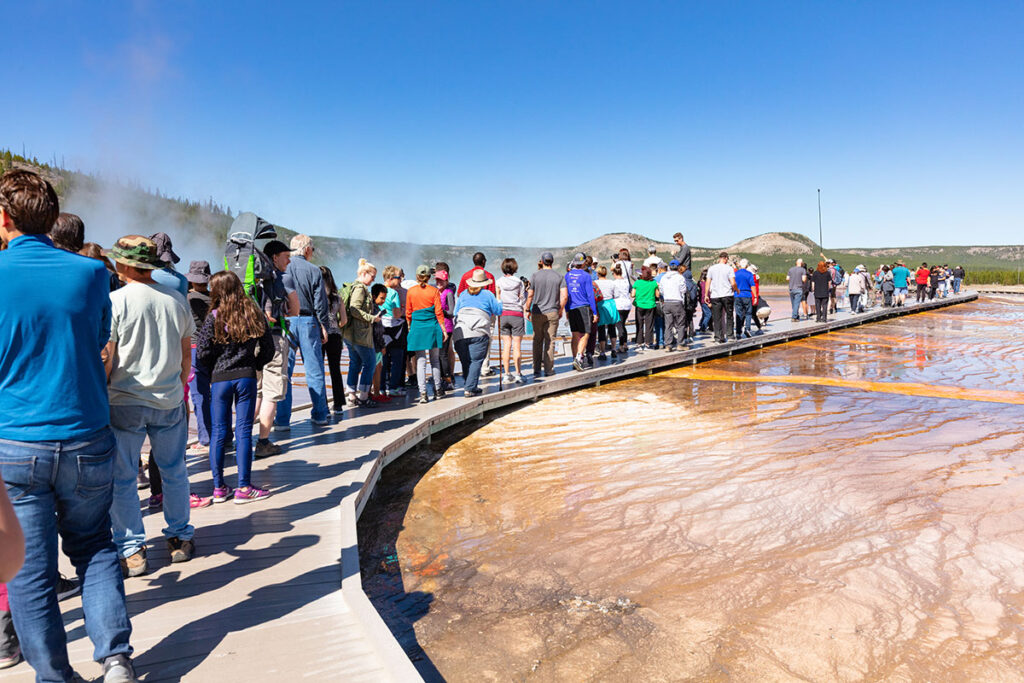
Visit Local, Price Global
Charging differential prices for outdoor recreation is a common practice. For example, it’s standard practice for state fish and wildlife agencies to charge different prices for residents and non-residents to hunt and fish. An out-of-state visitor who wants to hunt big game in Montana, for instance, pays more than $1,200 for licenses and permits. Meanwhile, it costs a resident less than $50 in fees to hunt an elk. In North Carolina, non-residents pay $32 for a fishing license, double the price for residents. Moreover, many states offer tiered pricing based on residency to visit state parks and campgrounds, often charging about $10 more per night.
Likewise, dozens of the most high-profile national park systems around the globe charge more for overseas visitors, as I saw firsthand at Torres del Paine. To visit the Galapagos Islands, one of the premier nature-based destinations in the world, foreign tourists pay a flat fee of $100, while Ecuadorians pay just $6. A Rwandan can take part in a chimpanzee trek at Nyungwe National Park for $4, while it will cost international tourists roughly $90. Nepal’s Chitwan National Park, home to rhinos, tigers, gharial crocodiles, and more than 500 species of birds, charges foreign visitors $15 per day, while locals pay just over $1.
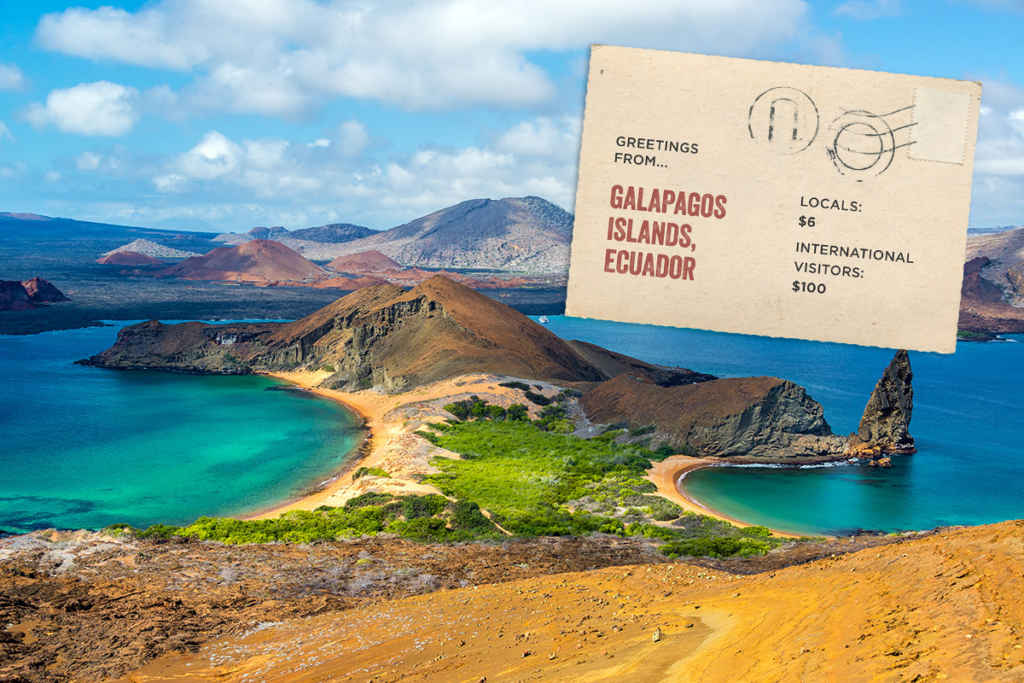
A 2019 report that reviewed entry fees at national parks around the world found approximately three dozen nations that charge non-citizens more than citizens. The strategy allows park systems to benefit from foreign visitors’ ability and willingness to pay, particularly in relatively lower-income countries. Additionally, for countries that receive a high share of visits from international tourists, the approach ensures that taxpayers do not bear an outsized burden of funding those visits. Some national park systems have adopted fee schedules with several tiers, whereby citizens of nearby countries pay a higher price than locals but a lower one than foreigners from farther away. Many park systems explicitly state that fee revenue is dedicated to funding operations and stewarding natural resources in parks.
When I examined per person fees at selected parks around the world for a hypothetical three-day visit, I found that fees for international tourists are by far lower at U.S. parks than at the other sites analyzed. The standard entry fee at top-tier U.S. national parks is $35 per vehicle for up to one week, meaning that each member in a family of four would cost less than $9 for their three-day trip. Three-day visits for international tourists at Chitwan in Nepal or Corcovado in Costa Rica would each cost roughly $45. Plitvice Lakes National Park, in Croatia, would cost all visitors about $106, while foreigners visiting Iguazu Falls and the flora and fauna around it in Argentina would pay about $143. National parks and reserves in East Africa consistently have some of the priciest entry fees. International tourists to Maasai Mara in Kenya or Serengeti National Park in Tanzania pay $70 per day, making it $210 for three days of admission.
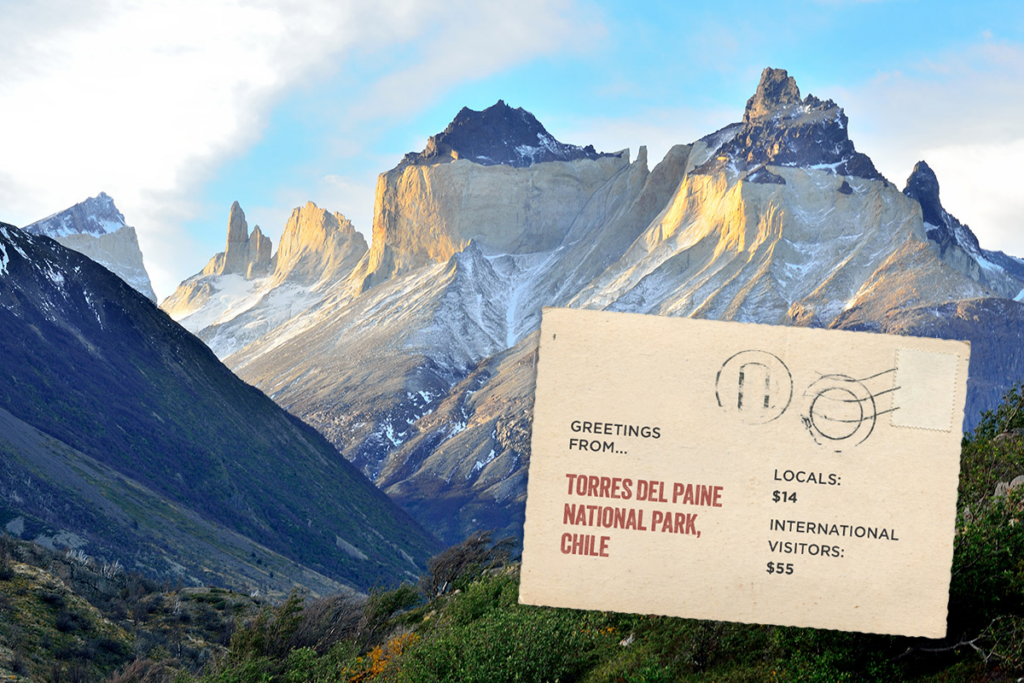
Approaches vary when it comes to collecting entry fees from overseas visitors. Many national parks charge at the gate and require local identification to receive the local price. Other sites, particularly islands, charge tourists upon airport arrival or departure. When visitors arrive at one of the two Galapagos Islands airports, for instance, park rangers collect the entrance fee for tourists. Some national park systems rely on tour operators or guides to assist with fee collection.
The lack of nuance in differentiating fees at U.S. national parks results in illogical structures when compared to high-profile parks around the world that also charge for entry. A European family visiting Zion National Park for three days, for instance, would pay $35 for a week-long visit. That would be nearly equivalent to the roughly $28 that a Kenyan family of four would pay to visit their home-country wildlife reserve of Maasai Mara for just a single day. When compared to global peers, there is clearly a great opportunity to refine the fee structures at U.S. parks in ways that would raise funds dedicated to their stewardship.
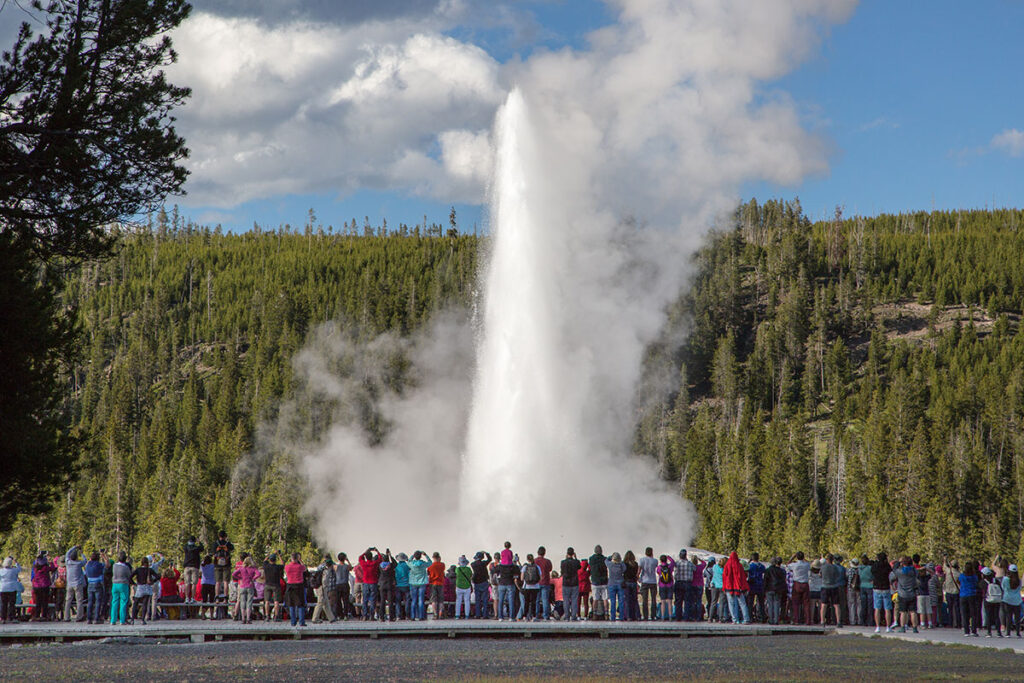
Caring for Generations to Come
Whether U.S. national parks adopted differential pricing directly at entrance gates or indirectly through other means, it could significantly increase total resources available to maintain sites and serve visitors. To be sure, there would be plenty of factors to consider when it comes to the particulars—details I explored more fully in the policy brief. But a surcharge for overseas visitors would boost revenue from a set of people able and willing to pay it, allowing parks to better meet their basic needs and come closer to funding maintenance in a sustainable way.
Now that we have kids, I wonder if my wife and I will have the chance to take them to Torres del Paine one day. Such a grand trip seems like a longshot, but I do know that I want them to be able to visit and appreciate our U.S. national parks. And I know that finding ways to steward those cherished sites properly will make sure they and future generations will have the chance to enjoy them.
